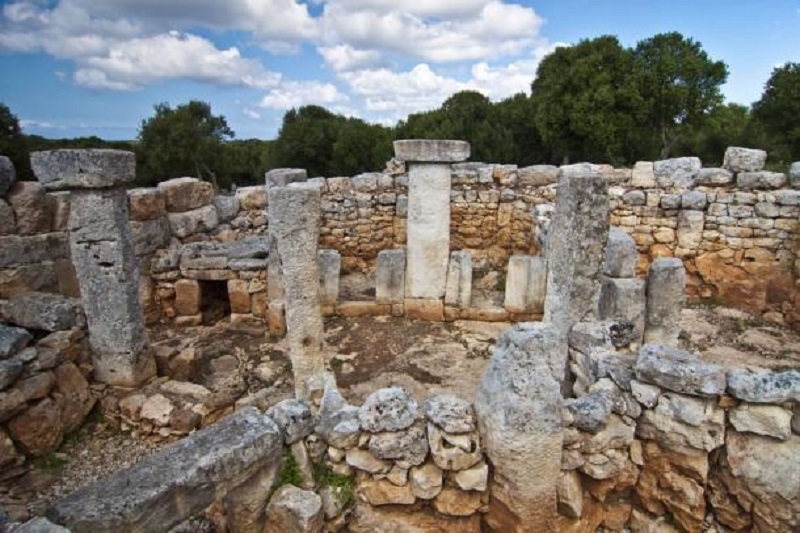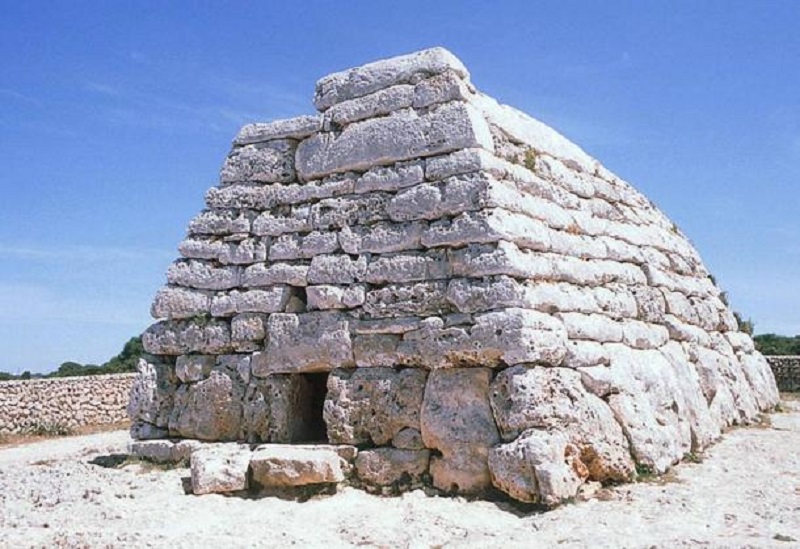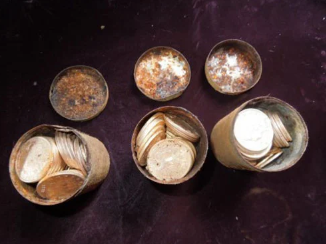Located in the Mediterranean Sea is a collection of Spanish islands known as the Balearic Islands. One of those islands, Menorca, is home to an impressive collection of megalithic stone monuments called taulas.
The origin and purpose of taulas are unknown, although they are the work of prehistoric humans. There have been a number of theories surrounding the mystery of taulas, often focusing on religious or astronomical purposes. Some people believe they are religious symbols. Others claim that taulas served as healing temples. Finally, it is hypothesized that the taula are aligned with the movement of the moon.

Taulas in Menorca. (Felix von Vietsch/Adobe Stock)
Menorca’s ancient past and iconic Taulas
Menorca is a small Spanish island with a population of about 94,000 people. It reaches 1,175 feet (358 meters) above sea level at its highest point and is 37 miles (60 kilometers) across at its widest point. During prehistoric times, Menorca witnessed many different cultures and peoples, including the Jews, the Vandals, the Byzantine Empire, the Crown of Aragon, the Muslims, the British and the Spanish.
Menorca is most famous for its 13 taulas. These megaliths are said to resemble Stonehenge and many have wondered about the mysterious origin of the taulas. The word taula means “table” in Catalan, one of the main languages of Menorca. The taulas are T-shaped, with a large, flat, horizontal stone placed on a tall vertical rock and surrounded by a U-shaped wall.
Talati de Dalt – T-shaped stone monument in Menorca, Spain. (Karol Kozlowski / BigStockPhoto)
Mysterious megalith
The tallest taulas reach heights of 12 feet (3.7 meters). For many years, people believed that taulas had roofs. However, researchers eventually agreed that the structure did not include a roof. Available evidence suggests that a sacrificial fire pit was placed in front of the taula, a roof being impractical.
Taulas are an amazing sight, as they were built long before the invention of heavy machinery or any other mechanism to assist in lifting heavy objects. It’s fascinating to imagine how our prehistoric ancestors could have lifted these giant boulders into place, creating well-proportioned structures that could withstand the test of time.

Talaiot de Trepuco, the megalithic table-shaped Taula monument on the island of Menorca, Spain. Credit: Tuulijumala/BigStockPhoto
It is believed that the taulas were built around 1000-3000 BC by the Talaiotic culture. Many people have tried to determine why taulas were created and what they mean. Obviously a structure that takes a lot of effort to create will serve some important purpose for its builders. There are several theories about the purpose taulas served, each offering a potential insight into Talaiotic culture and lifestyle.
Tomb of Es Tudons, Talaiotic monument in Menorca. (Public domain)
Did the Talaiotic people build Taulas as temples?
One theory is that the taulas served as temples to the Talaiotic god. There is no indication of what religion they followed or what they called their god, but a discovery during excavations has led one researcher to theorize that they may have worshiped a deity. cow . Researchers were excavating a site known as Torralba d’en Salort when they came across a bronze statue of a bull, which may have been sitting on a shelf in Torralba d’en Salort as an object of worship .
The bull was found along with other artifacts believed to resemble cult objects found in a modern-day church. The image of the bull has special significance because the first people to inhabit Menorca came from Crete and the bull played a prominent role in their culture. Spanish archaeologist J. Mascaro Pasarius was the first to propose the idea of a bull god, with the stones representing the bull’s face and horns. This theory has not been widely accepted.
Taula, Torralba d’en Salord of the Talaiotic culture, Menorca. ( CC BY-SA 2.0 )
Or maybe the Healing Center?
Another theory is that taulas were places of healing. According to this theory, the taulas are oriented to the constellation Sagittarius. The healing theory was also supported by items discovered during the excavation of the taulas: an inscription reading “I am Imhotep the god of medicine” and a bronze horseshoe, symbolizing the god of medicine Greece, Asclepius .
Over the years, the constellation Sagittarius became more and more difficult to see and was virtually invisible by 1000 BC. This may explain the eventual abandonment of the taulas, as they would have become irrelevant when the Talaiotic people could no longer see the constellation Sagittarius.

The constellation Centaurus can be seen with the naked eye. ( CC BY-SA 3.0 )
Perhaps they are megaliths linked to the Moon?
The final theory is called the Fenn moon theory, named after researcher Waldemar Fenn. Fenn studied taulas extensively, paying special attention to their orientation. He realized that the people who built the taulas had an interest in astronomy when he found a cave drawing showing several constellations. By studying the physical location and orientation of the taulas, Fenn began to realize that they were not pointing to any fixed location in the sky.
This led him to suggest that they may have been intended to point at a moving object in the sky – the moon. He started looking at the moon from the taula and discovered that in December, when looking towards the entrance of the taula, the moon was in the top left corner. Over the course of nine years, the December moon positions will form a semicircle extending from the upper left corner to the upper right corner.
Over the next nine years, the moon will follow the same pattern in reverse, ending up at its starting point after a total of 18 years. He also noted 12 tall columns and one shorter column which he interpreted to represent 12 or 13 full moons each year.
The only flaw in Fenn’s theory is that of the 13 taulas, only 13 follow the lunar pattern. Day 13 is not. It is possible that without this defect, Fenn’s theory would be more widely accepted. However, this is still the most reasonable explanation for taulas – an ancient calendar that tracked the moon.
They remain a valuable puzzle
To this day, it remains unclear what the purpose of the taulas was. Researchers have come up with several theories based on taulas’ physical characteristics. It is likely that they had some religious or astronomical purpose, or perhaps both. With further research, we may one day know the exact reasons behind the construction of the megaliths in Menorca.
For now, we should recognize their cultural value and protect them so that future generations can continue to marvel at their creativity and the ancient culture they represent.
Storm clouds over ancient taula megalith, Menorca. ( Mango / Adobe Stock)






